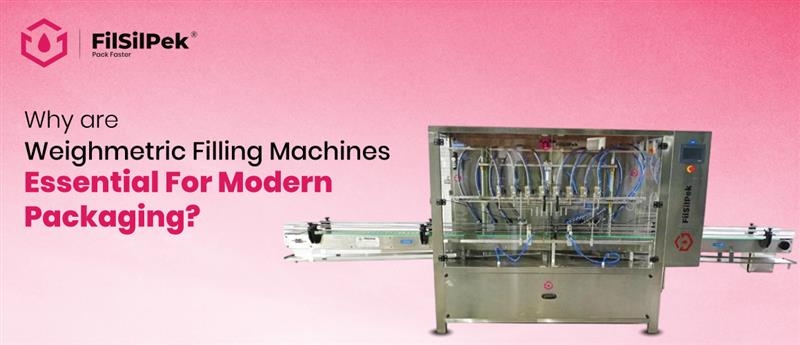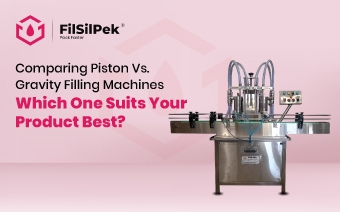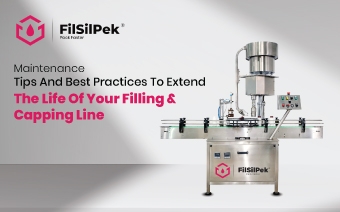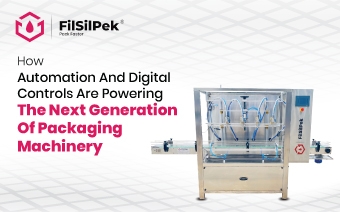Why are weighmetric filling machines essential for modern packaging?
Modern packaging facilities are expected to deliver high-speed operations, uniform product weights, and cost-efficient results all without compromising quality or compliance. Every gram that goes into a pouch or jar contributes to profitability, so measuring it correctly has become a manufacturing necessity rather than an option.
Weighmetric filling machines have become the preferred choice for industries that require accuracy and adaptability on the production line. These systems don’t just fill; they calculate, verify, and record data with remarkable consistency. Their ability to handle variable products, maintain output rates, and support traceable manufacturing makes them an indispensable part of smart packaging setups.
This article explains how weighmetric filling machines function, what makes them essential for modern manufacturing, and how they help businesses balance productivity with accuracy.
What is a weighmetric filling machine?
A weighmetric filling machines measures and dispenses product into packaging based on the target weight rather than volume. The system relies on load cells or weighing sensors to monitor product mass in real time, ensuring each fill matches the programmed value.
Different types of weighmetric fillers cater to specific production needs:
- Multiheaded weighers – used for products like snacks, dry fruits, frozen items, and granules that vary in shape or density.
- Linear weigh fillers – suitable for medium-speed lines and consistent-flow materials such as grains, seeds, or detergents.
- Net-weight fillers – ideal for liquids or semi-solid products where direct weighing into the final container delivers better control.
These systems operate through a continuous cycle of feeding, weighing, verifying, and releasing. The result is consistent packaging performance across multiple SKUs and production batches.
Why weighmetric filling machines are essential for modern packaging
Packaging operations today must combine precision with adaptability. Markets are expanding, SKU counts are multiplying, and production costs are under constant scrutiny. A weighmetric filling machines system allows manufacturers to manage these pressures without sacrificing consistency or speed.
1. Brings measurable accuracy to high-speed packaging
High-speed production lines often face the challenge of keeping every pack within tolerance while maintaining throughput. Weighmetric filling machines handle this through multihead combinations or advanced load-cell algorithms that calculate weight distribution in milliseconds. Each fill is digitally verified before release, minimizing overfills and underfills.
Accuracy at this level not only ensures compliance with net-weight labeling regulations but also protects margins by cutting down excess product giveaway. In large-scale operations, these savings accumulate quickly and reflect directly on profitability.
2. Reduces process losses and stabilizes batch output
Manual filling or volumetric methods can lead to product variations when materials behave inconsistently. Weigh metric systems neutralize these fluctuations. They automatically adjust feed rates based on product flow, ensuring uniform fills across every batch.
Reduced variability in fill weights leads to predictable yield planning, better raw material forecasting, and less product rework. That stability helps production managers maintain consistent output even under variable raw material conditions.
3. Adapts to multi-SKU packaging with ease
Packaging lines are rarely dedicated to a single product anymore. A typical facility may need to handle 100g, 250g, and 1kg variants in quick succession. Weigh metric filling machines support such flexibility through programmable weight settings and recipe-based operations.
Switching between product formats or pack sizes becomes a software-driven task rather than a mechanical changeover. This flexibility minimizes downtime and enables faster response to market demand, seasonal fluctuations, or promotional pack requirements.
4. Integrates seamlessly with automated production systems
Modern packaging floors are built around data connectivity and process integration. Weigh metric fillers can interface with PLCs, SCADA, or ERP platforms, providing live production data and performance metrics. The data collected through these machines supports traceability audits, quality checks, and performance analytics.
Centralized control helps supervisors monitor fill trends, detect anomalies early, and optimize line parameters for efficiency. When connected with upstream and downstream systems, weigh metric fillers act as a reliable feedback node that strengthens the overall automation network.
5. Improves compliance and packaging credibility
In industries where weight declaration is mandatory such as food, pharmaceuticals, chemicals, and agriculture weighmetric filling machines act as compliance assurance tools. Every pack leaving the line matches the declared net weight, keeping the brand safe from penalties or consumer disputes.
The consistency achieved through digital weighing also enhances brand perception. Consumers associate uniformity with reliability, which translates to trust in quality. Over time, this consistency builds a stronger market presence without additional marketing spend.
Choosing the right weighmetric filling machine
The value of a weigh metric system depends on how well it fits the product and the production environment. A few key considerations can help in making the right selection.
Product nature and flow behavior
Free-flowing powders, granular items, or irregular solids each require different hopper designs and feed mechanisms. The flow characteristics of the product directly influence weighing accuracy and discharge control.
Speed versus precision balance
Lines with very high throughput may prefer multiheaded weighers that balance speed and accuracy through combination calculations. Smaller or specialized producers might prioritize precision over volume with linear or single-head designs.
Hygiene and cleanability
For applications in food, dairy, or chemical packaging, contact surfaces must be made from stainless steel and allow easy cleaning. Modular designs that permit quick access to hoppers and weighing heads simplify routine maintenance and ensure sanitary operation.
Integration capabilities
Machines with open communication protocols make data sharing easier. Compatibility with PLC or MES systems helps consolidate information for production analysis and long-term optimization.
Practical steps for efficient implementation
Even advanced systems deliver optimal results only when deployed strategically. A few proven steps can ensure the machine performs to its potential.
- Run validation trials before full deployment. Simulate actual production conditions and evaluate results against desired tolerances.
- Train operators thoroughly. Consistent parameter setup, handling, and cleaning routines prevent downtime and extend component life.
- Schedule calibration checks. Routine verification of load cells keeps measurement drift under control and ensures repeatable accuracy.
- Plan preventive maintenance cycles. Cleaning and mechanical inspection at fixed intervals avoid clogging, buildup, and unplanned stoppages.
Long-term operational and financial impact
The decision to implement weighmetric filling equipment is not purely about automation; it’s about measurable control over production cost and quality. Over time, the reduction in giveaway, decrease in manual intervention, and improved predictability of batch yields add up to substantial operational gains.
Data recorded by the system can also support continuous improvement programs. Engineers can analyze fill deviations, correlate them with environmental or material conditions, and make process refinements that further stabilize operations. For manufacturers running multiple production shifts, this level of process visibility becomes a strategic advantage.
Conclusion
Packaging lines are evolving into intelligent ecosystems where consistency, traceability, and efficiency define success. Weighmetric filling machines are a cornerstone of that evolution. They combine real-time weighing accuracy with operational flexibility, allowing manufacturers to produce more consistent packs at higher speeds and lower cost.
Whether the requirement is for snacks, pulses, detergents, or industrial granules, these systems deliver measurable results that reflect both product quality and financial performance. Choosing the right model and implementing it with structured process control can transform a regular packaging line into a high-efficiency operation built for modern production needs.
For tailored guidance on selecting or integrating a weighmetric filling machines solution for your facility, reach out to [email protected]
Comparing piston vs. gravity filling machines: Which one suits your product best?
Filling machines are a core part of any liquid packaging…..
Maintenance tips and best practices to extend the life of your filling & capping line
A filling and capping line operate at the heart of production…..
How Automation and Digital Controls Are Powering the Next Generation of Packaging Machinery
Packaging machinery has moved far…



